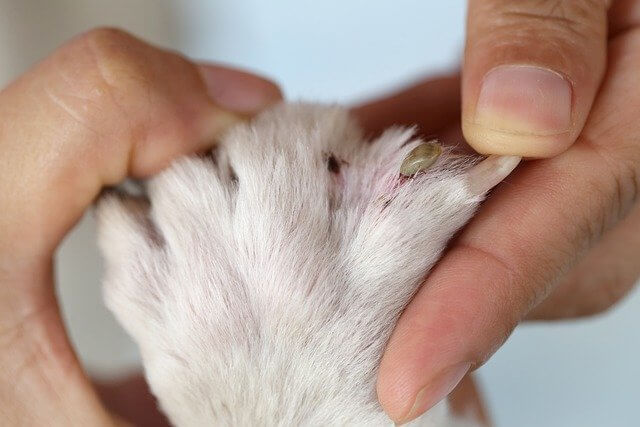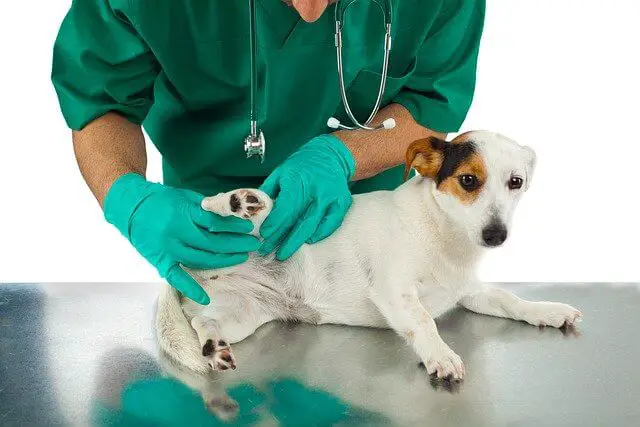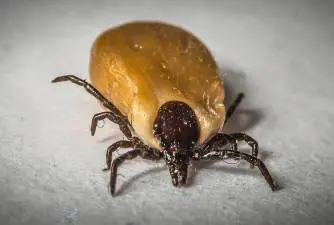Ehrlichiosis in Dogs | Signs & Symptoms
09.12.2021.
One of the worst dog owner’s enemies is the nasty tick. All dog owners know ticks can carry different diseases, so it is crucial you keep a close eye on your dog, especially if you live in a warmer climate where ticks are fairly common. One of the diseases ticks can carry is ehrlichiosis. If you found a tick on your dog, or the vet diagnosed this disease, you’d probably want to know a little bit more about ehrlichiosis in dogs.
What is ehrlichiosis in dogs?
The easiest way to describe ehrlichiosis is as “a tick-borne disease caused by the bite of the brown dog tick.” The first cases of ehrlichiosis in dogs were documented in the 1970s. Military dogs returned from Vietnam were infected with a mysterious disease. Vets in the US had no prior experience with it, and treatment was incomplete. Initially, the disease was called tracker dog disease or tropical canine pancytopenia.
What causes the disease?
Ehrlichiosis is caused by brown dog ticks. More precisely, it is caused by a bacteria-like organism that ticks can carry. The name of that organism is the rickettsial organism. There are several different species of this disease-causing organism, but the one most commonly found in dogs with ehrlichiosis is Ehrlichia canis.

How can my dog get ehrlichiosis?
There is only one way your dog can get infected by ehrlichiosis - by getting bitten by a disease-carrying brown dog tick. When the tick bites a dog, it will suck the blood, but it will also release its body fluids back to the dog’s bloodstream. That’s when the nasty Ehrlichia canis infects dogs.
The main thing to remember is that Ehrlichia canis is endemic to the southeastern and southwestern states in the US. If you live in those states, you should be extra careful with your dog’s tick protection. However, brown dog ticks can be found all over the US and Canada. If this tick bit your dog, you should call your vet and make sure your dog is not infected.
How can I know if my dog has ehrlichiosis?
The first sign should be a tick bite. You should make sure your dog is not infected or bitten by a tick. Without the bite, the infection is not possible. This disease progresses in three stages, and some dogs reach all three, and some get rid of the disease in the sub-clinical phase. Most dog owners will see something’s wrong with their dog, even though they might not be sure at first what disease the dog is infected with. The best way to learn your dog has ehrlichiosis is by getting a diagnosis from a vet.
Symptoms of ehrlichiosis in dogs
The sooner your vet uncovers this disease and makes an accurate diagnosis, the better. Like any other disease, ehrlichiosis will cause specific symptoms. It is a good idea to learn them, write them down, and when you take your dog to the vet, your vet can get the entire list of the symptoms you noticed in your dog. It will make their diagnosis easier. Since this disease has three phases (acute, sub-clinical, clinical), each phase has its own symptoms. Here are the symptoms of ehrlichiosis in dogs based on different phases;
Acute phase ehrlichiosis symptoms
- Swollen lymph nodes
- Fever
- Weight loss
- Bleeding disorders
- Respiratory issues
- Neurological disturbances
The acute phase can last anywhere from two to four weeks.

Sub-clinical phase ehrlichiosis symptoms
In this phase, the disease will not cause any symptoms to the infected dog. The only way a vet can determine the dog is infected is to collect a sample of the blood from the tick bite wound. Many vets say this is the worst phase since it is extremely rare owners or vets notice anything wrong with the dog.
Clinical phase ehrlichiosis symptoms
- Swollen limbs
- Anemia
- Eye problems
- Lameness
- Bleeding episodes
- Neurological issues
- Bone marrow problems
How is ehrlichiosis diagnosed?
This disease is difficult to diagnose early. Most owners and vets will see no symptoms in the early stages of the disease. The issue is that the dog’s body usually takes 2 - 3 weeks to start reacting to the presence of the organisms and start developing antibodies. The primary way vets diagnose this disease is by checking antibodies and analyzing symptoms.
Other diagnostic tests can include ELISA (enzyme-linked immunosorbent assay) or IFA (indirect fluorescent antibody), which will help determine the exact species of Ehrlichia organisms and the severity of the infection. Even if the vet tests the dog early because they were bitten by a brown dog tick, that test can be negative. This disease can be tricky to diagnose.
How is ehrlichiosis in dogs treated?
The good news is that ehrlichiosis in dogs can be treated fairly easily. Even though Ehrlichia is not a bacteria, it is susceptible to antibiotics. More precisely, doxycycline is a very effective form of treatment for dogs with ehrlichiosis. The treatment will have to last at least 4 - 6 weeks and might require additional medications to support or deal with other symptoms. Dogs that become anemic might need a transfusion.
Can it be prevented?
Fortunately, it is easy to prevent infection. You need to make sure your dog is protected from ticks. Since ticks carry this disease, they cannot transmit ehrlichiosis if they cannot bite your dog. Even if the tick bites your dog, removing it quickly will lower the chance of the disease being transmitted. One of the ways to prevent ticks from biting your dog is NexGard tablets.
World Dog Finder team







Share